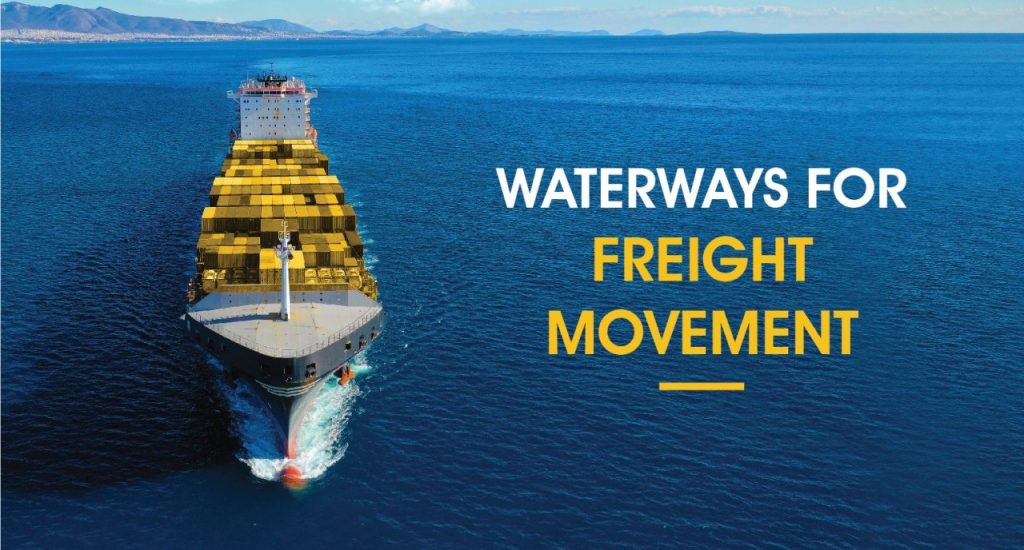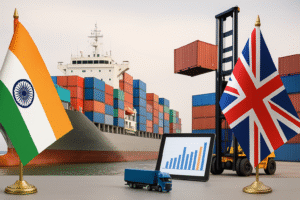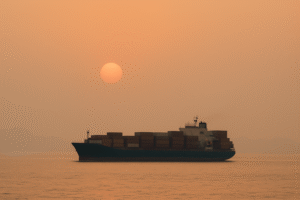
This blog enlists three reasons why waterways could be the future of freight movement in India.
Indian freight logistics sector — A quick look
India has been the world’s fastest-growing major economy in the past five years owing to the increasing demand for goods and services. The freight movement both, domestically and beyond the borders has created economic opportunities for millions of Indians. The Indian logistics sector is valued at $150 billion, contributing 14.4% of the country’s GDP. Recognising the critical role of this sector in the country’s progress, the Government of India (GOI) is pursuing a range of actions to improve its logistics performance. These include the development of rail-based freight and coastal and inland waterways.

Distribution of freight logistics modes in India in 2019. Source.
Need to adopt a clean and cost-effective freight transport system
The freight logistics sector in India is responsible for nearly 7% of the total CO2 emissions. This figure will increase further as the demand for goods increases. India is the third-largest global emitter of greenhouse gas emissions. The country’s domestic action will significantly influence global emissions, especially around transport. To curtail emissions from the freight sector, it is critical to improve logistical efficiency and consider and encourage a shift towards cleaner and cheaper modes of transporting goods — rail, water and pipeline. These modes are not only more cost-effective than road-based transport, but also demand lower energy consumption and have lesser CO2 emissions. Here, we will focus on waterways for freight movement and understand it as an alternative to road transport.
India’s Inland Waterways
India has about 14,500 km of navigable waterways that comprise rivers, canals, backwaters and creeks. Despite having this extensive network of inland waterways, they are highly underutilised for freight transport and play a limited role in hinterland connectivity. The Ministry of Ports, Shipping and Waterways has declared 111 waterways as National Waterways (NWs) under the National Waterways Act, 2016. According to the Inland Waterways Authority of India (IWAI), 25 of the 111 NWs are fit for cargo and passenger traffic.
Advantages of inland waterways over other forms of logistics
India has one of the longest coastlines of about 7,517 km. With this geographical asset, the scope of increasing the trade volume is higher than expected. It makes sense to indulge in multimodal logistics with waterways as a big part of the transit.
Reason #1 — Cost-saving
Waterways are cost-effective for shipping goods, especially for long distances. Large boats operate cheaply since fuel expenditures are distributed across a larger volume. Further, distance has a negligible effect on overall transit costs. In comparison to road and rail transport, waterways have relatively low maintenance costs.
Sea freight covers only one-third the cost of road transport and is 4-6 times cheaper than air transport. Adoption of waterways has a spillover effect on the manufacturing and export competitiveness, as the price of most commodities directly depends on the transportation cost. Thus, the overall cost incurred can reduce drastically.
As per the World Bank estimates, in India, it costs 1 cent per kilometre to carry a ton of freight by waterways. In contrast, it takes 2 cents by rail and 3 cents by road per kilometre.
Reason #2 — Excellent for moving heavy cargo
Waterways are the recommended mode for heavy equipment and machinery that are unsuitable for air freight or road transport. Waterways move up to 4 times as much cargo per one litre of fuel, making trade cost-effective. Also, the freight movement by waterways mitigates the risk of heavy cargo loss or damage. Once packed and sealed, the containers provide great protection to the cargo against atmospheric conditions, which might not be possible with other forms of transportation.
Reason #3 — Eco-friendly
When compared to other forms of transport, waterways offer the least amount of carbon emissions.
Global freight shipping is responsible for 2.2% of global greenhouse gas emissions. And these already-low emissions will drop further owing to technological advancements.
LNG — a clean fuel with 95% methane and small amounts of other components — is gaining popularity as a marine fuel. Reduced carbon footprint turns waterways into a greener way of moving freight.
Waterways — A bright future for India’s freight movement
The GOI is speeding up efforts towards attaining a greener future. As part of this plan, waterways are a great alternative for the shipping of cargo. To promote inland waterways as a complementary mode of freight movement, the Ministry of Ports, Shipping and Waterways has waived off user charges. GOI has also introduced digital solutions, such as a portal for cargo and cruise movement information and a portal for river navigation and infrastructure information (CAR-D Portal and PANI Portal).
Already waterways have been effective in increasing the movement of cargo by about 13% in 2020-21 as compared to 2019-20. With encouragement from the GOI and the above advantages, businesses could consider adopting waterways for freight movement.
Want to know how you can make your freight movement greener and more affordable? Ask Tiger Logistics Ltd. We are a third-party logistics services provider, covering international freight forwarding, supply chain management, project logistics defence logistics and cold chain logistics. Reach out to our experts today!







